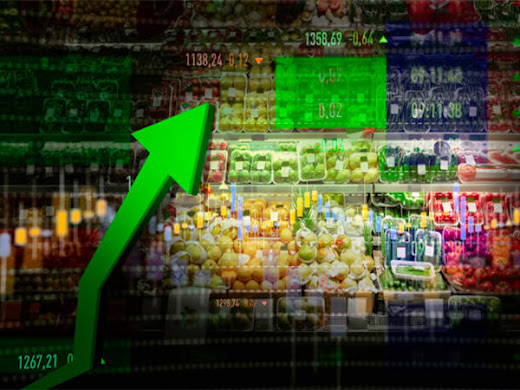Inflation in Q1 FY26 is expected to stay well within the Reserve Bank of India’s (RBI) projections, offering a temporary breather to policymakers and boosting hopes for growth-oriented policy measures. According to a recent report by Bank of Baroda (BoB), falling food prices and a favourable statistical base are the primary reasons for the current disinflationary trend.
The Inflation in Q1 FY26 forecast comes at a time when the RBI has projected Consumer Price Index (CPI) inflation for the full financial year 2025–26 at 3.7%, with quarterly estimates of 2.9% for Q1, 3.4% for Q2, 3.9% for Q3, and 4.4% for Q4.
Inflation in Q1 FY26 Driven by Food Price Deflation
BoB’s internal Essential Commodities Index (BoB ECI) showed a year-on-year decline of -1.8% in June 2025, marking the third straight month of deflation. This compares to a -0.6% drop in May 2025.
According to the report, Inflation in Q1 FY26 remains subdued due to price corrections in vegetables and pulses, supported by improved agricultural production and better supply conditions during the ongoing Kharif season.
Vegetables and Pulses Lead the Deflation
The Inflation in Q1 FY26 trend is significantly influenced by the TOP category—Tomatoes, Onions, and Potatoes. In June:
- Onion prices dropped by -26.1%
- Potato prices fell by -20.3%
- Tomato prices declined by -24%
Among pulses, Tur/Arhar saw a massive -23.8% annual drop, the fourth consecutive month of double-digit deflation. Urad, Masoor, and Moong also showed consistent price corrections.
Cereal Prices Decline, Edible Oil Remains High
Retail prices for cereals, especially rice, also dropped by -5.1% year-on-year in June. Prices of basic essentials like salt and jaggery remained largely unchanged.
However, edible oil prices remained elevated, though moderated by favorable global pricing trends. The report noted that these oil prices are still higher than average, but international supply has helped contain sharp spikes.

Seasonal Factors in June Price Movements
On a month-on-month (MoM) basis, the BoB report observed a 0.6% rise in June prices. However, the seasonally adjusted MoM figure declined by -0.7%, suggesting that the increase was largely seasonal and linked to monsoon-related supply issues.
Tomatoes showed the sharpest sequential rise of +36.1%, their highest since October 2024, while onions saw a milder decline of -0.4%, compared to -9.8% in May.
The report warns that June–July marks a seasonal reversal for vegetable prices and an upward correction is expected in the coming weeks.
Supply Chain Improvements Needed
Although Inflation in Q1 FY26 remains under control, BoB emphasizes the importance of strengthening cold storage networks and localized vegetable clusters to curb seasonal price spikes and build long-term supply resilience.
With 578 unsafe buildings identified in urban centers and climate variability impacting food production, experts call for structural improvements in agri-logistics.
Policy Outlook: RBI Gets Breather to Focus on Growth
As Inflation in Q1 FY26 is below RBI’s upper tolerance band, the central bank may shift its focus toward stimulating economic growth. According to the BoB report, the current inflationary trend allows policymakers to explore growth-friendly fiscal measures without the immediate need for rate hikes.
The report concludes that if deflation in essential commodities continues and the base effect remains favorable, CPI for June could settle at 2.6%, below RBI’s projection of 2.9%.
The Inflation in Q1 FY26 outlook presents a comforting scenario for India’s economy. Supported by falling food prices, a strong statistical base, and controlled supply-side pressures, the country is well-positioned to manage inflation while focusing on economic expansion.
RBI Introduces Strict Rules for AEPS Withdrawals from January 2026

